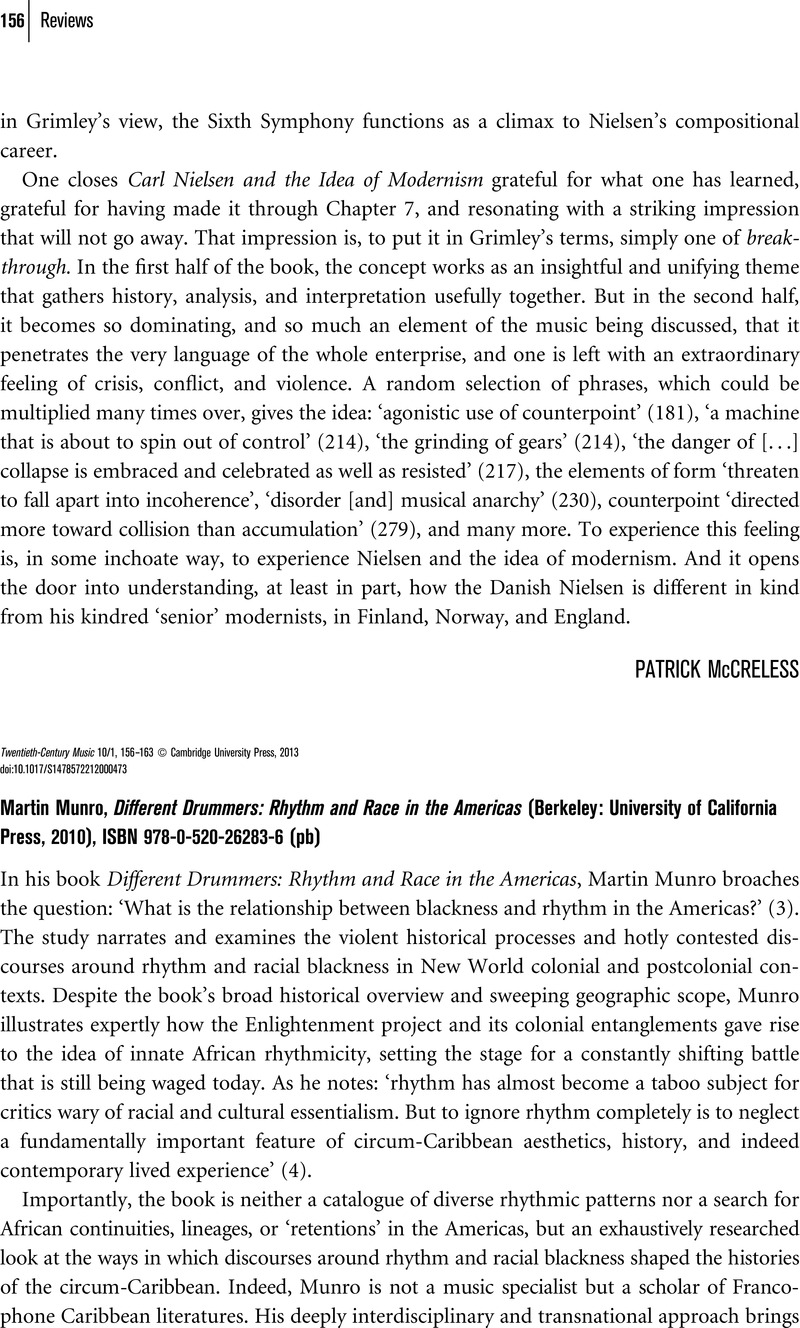Article contents
Martin Munro, Different Drummers: Rhythm and Race in the Americas (Berkeley: University of California Press, 2010), ISBN 978-0-520-26283-6 (pb)
Review products
Published online by Cambridge University Press: 27 March 2013
Abstract

- Type
- Reviews
- Information
- Copyright
- Copyright © Cambridge University Press 2013
References
1 Gilroy, Paul, The Black Atlantic: Modernity and Double Consciousness (Cambridge, MA: Harvard University Press, 1993)Google Scholar. Gilroy writes of an ‘anti-anti-essentialism that sees racialised subjectivity as the product of the social practices that supposedly derive from it’ (102).
2 Munro notes that ‘The practice of balanse or swinging, heating things up in the ritual dance, is also evoked in nineteenth-century descriptions of New Orleans voodoo ceremonies’ (42).
3 See Guilbault, Jocelyne, Governing Sound: the Cultural Politics of Trinidad's Carnival Musics (Chicago: University of Chicago Press, 2007)Google Scholar. Of this pitfall of linear and biologizing historical narratives about musical change Guilbault writes: ‘I use “genealogy” in Michel Foucault's sense. Rather than relating a history following a linear development, genealogy treats history as the product of not only contingencies, but also “accidents”, “errors”, and “faulty calculations”’ (282, n. 7).
4 Edwards, Brent Hayes, ‘The Uses of Diaspora’, Social Text 19/1 (2001), 66CrossRefGoogle Scholar.
5 See Danielsen, Anne, Presence and Pleasure: the Funk Grooves of James Brown and Parliament (Middletown, CT: Wesleyan University Press, 2006)Google Scholar and Vincent, Rickey, Funk: The Music, the People, and the Rhythm of the One (New York: St Martin's Griffin, 1996)Google Scholar.
6 Moten, Fred, In the Break: the Aesthetics of the Black Radical Tradition (Minneapolis: University of Minnesota Press, 2003)Google Scholar.
7 Ralph Ellison, ‘What America Would Be Like Without Blacks’, Time (6 April 1970).
8 See also Radano, Ronald, Lying Up a Nation: Race and Black Music (Chicago: University of Chicago Press, 2003)Google Scholar and Radano, , ‘Hot Fantasies: American Modernism and the Idea of Black Rhythm’, in Music and the Racial Imagination, ed. Radano, Ronald and Bohlman, Philip V. (Chicago: University of Chicago Press, 2000)Google Scholar. Munro refers to Radano's Lying Up a Nation to set up his larger argument about African-American rhythmicity in Chapter 4.
- 2
- Cited by


